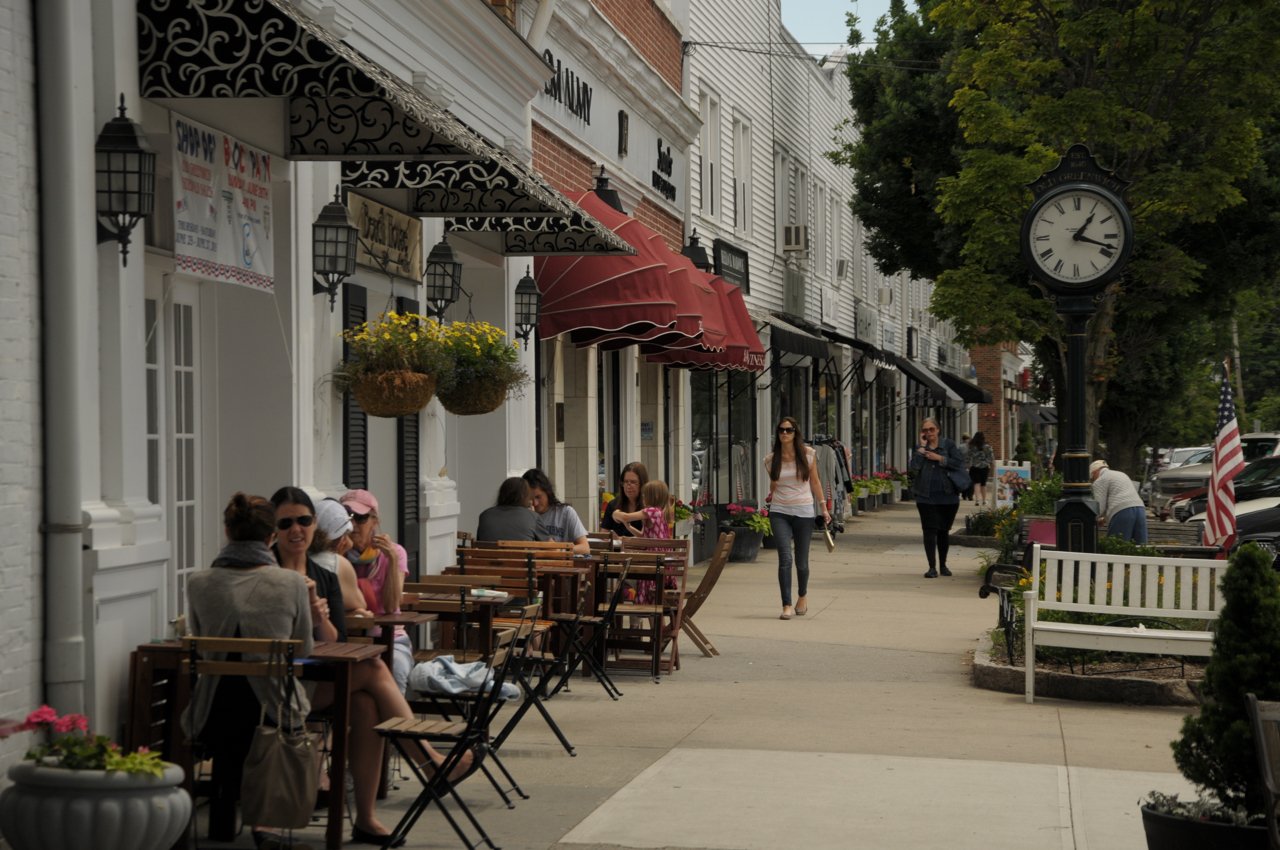If you’re keeping abreast of the latest real estate article and you come across the word “surban”—that isn’t just some sloppy spelling. It’s a new real estate term we’re likely to see a lot more often. The most-cited definition for “surban” is in Urban Dictionary.com. It defines the word as “a mix of urban and suburban living.” That’s accurate as far as it goes, but doesn’t include some wider implications that could well affect Greenwich real estate trends in meaningful ways—especially if some generalizations about millennials prove accurate.
The Washington Post’s article, “Millennials Go ‘Surban’” tells the history of a young couple who grew up in typical suburban surroundings, but later moved to the big city (Chicago) where they enjoyed “the vibrant neighborhood of boutiques and pubs” among young folks like themselves. “There was always something to do.” But after seven or so years, their friends started disappearing. They were starting to raise families, so they needed more space for the children. As a practical matter, the urban lifestyle (and expense) was no longer sustainable. They sought affordable homes outside the city—yet they didn’t want to give up everything that had drawn them to the urban life. They were looking for a compromise: a neighborhood that combined “urban energy and walkability” with the space and affordability associated with suburbs.
In other words, something “surban.” This is not news to Greenwich, where 25% or more of our buyers, annually move out from NYC. But if the “surban” mindset gains traction, we are in for a nice lift to sales numbers, it seems.
The key to almost all surban forecasts is the rise of autonomously driven cars—and the resulting disappearance of privately owned autos. Typical was The New York Times article, “The Suburb of the Future, Almost Here.” It described future surban designs that would “hit the sweet spot” of the growing ranks of millennial suburbanites. Unlike previous suburbs that were built around cars, these would incorporate more walkability and at least 50% less pavement—which would, in turn, enable smaller house and lot sizes (and better affordability). Autonomous autos, drone deliveries and the like are assumed to be inevitable.
In the same vein, Yahoo Finance projects surban neighborhoods where “you can walk, shop, work and live all in the same environment and not even really need a car.” Most Greenwich readers may find the “almost” in The Times’ “Almost Here” to be an overestimate—but it’s true that the technological innovations are surprisingly close to being achievable.
Self-driving autos and drones delivering our groceries aren’t fixtures of Greenwich everyday life just yet, but one that our current town planners should keep in mind as they work on the next Greenwich Ten Year Master Plan.
If you’re keeping abreast of the latest real estate article and you come across the word “surban”—that isn’t just some sloppy spelling. It’s a new real estate term we’re likely to see a lot more often. The most-cited definition for “surban” is in Urban Dictionary.com. It defines the word as “a mix of urban and suburban living.” That’s accurate as far as it goes, but doesn’t include some wider implications that could well affect Greenwich real estate trends in meaningful ways—especially if some generalizations about millennials prove accurate.
The Washington Post’s article, “Millennials Go ‘Surban’” tells the history of a young couple who grew up in typical suburban surroundings, but later moved to the big city (Chicago) where they enjoyed “the vibrant neighborhood of boutiques and pubs” among young folks like themselves. “There was always something to do.” But after seven or so years, their friends started disappearing. They were starting to raise families, so they needed more space for the children. As a practical matter, the urban lifestyle (and expense) was no longer sustainable. They sought affordable homes outside the city—yet they didn’t want to give up everything that had drawn them to the urban life. They were looking for a compromise: a neighborhood that combined “urban energy and walkability” with the space and affordability associated with suburbs.
In other words, something “surban.” This is not news to Greenwich, where 25% or more of our buyers, annually move out from NYC. But if the “surban” mindset gains traction, we are in for a nice lift to sales numbers, it seems.
The key to almost all surban forecasts is the rise of autonomously driven cars—and the resulting disappearance of privately owned autos. Typical was The New York Times article, “The Suburb of the Future, Almost Here.” It described future surban designs that would “hit the sweet spot” of the growing ranks of millennial suburbanites. Unlike previous suburbs that were built around cars, these would incorporate more walkability and at least 50% less pavement—which would, in turn, enable smaller house and lot sizes (and better affordability). Autonomous autos, drone deliveries and the like are assumed to be inevitable.
In the same vein, Yahoo Finance projects surban neighborhoods where “you can walk, shop, work and live all in the same environment and not even really need a car.” Most Greenwich readers may find the “almost” in The Times’ “Almost Here” to be an overestimate—but it’s true that the technological innovations are surprisingly close to being achievable.
Self-driving autos and drones delivering our groceries aren’t fixtures of Greenwich everyday life just yet, but one that our current town planners should keep in mind as they work on the next Greenwich Ten Year Master Plan.


